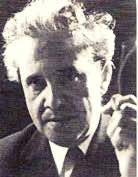 Maurice Vagh Weinmann
Maurice Vagh Weinmann
(1899 – 1966)
Born and died in Budapest, Hungary.
Known for: Rural scene, portrait, figure, genre and landscape painting.
Maurice Vagh Weinmann was a creative artist. Maurice Vagh Weinmann was born in 1899 and died in 1986. Artists born in the same year and of the same generation are Salomon Boim, Sydney Buckley, Sadie Skoletsky Rosenblum, Suan Pansen, and John Cluysenaar.
Maurice Vagh Weinmann was born in 1899 and was predominantly influenced by the 1900s and 1910s growing up. The Fauves are generally considered to be the first major Post-Impressionist group, working in the at the start of the 20th century. With artists such as Henry Matisse within their ranks, the Fauves believed that intense, other worldly colours and vibrant brushstrokes were a key component of painting.
During this same time period a young Pablo Picasso, still in his youth, created his renowned Blue and Rose periods in Paris, and by the end of the 1920s he had developed the initial ideas of portraying fractured views of reality alongside his contemporary Georges Braque. This movement became known as Analytical Cubism.
The dynamic development of pictorial art defined the first decades of the twentieth century.
It was an era of experimentation and post-Impressionism, with artists first delving into Expressionism and Abstraction.
A variety of collectives and communities of artists across the globe developed different ways of articulating these crucial innovations. The De Stijl group in the Netherlands, led by the teachings of Piet Mondrian, started to practice pioneering theories concerning Abstraction. Alongside this, Kasimir Malevich and his contemporaries developed Constructivism and Suprematism in the Soviet Union. These pioneering styles of art were demanding and politicised, and looked to serve a new world order.
At the same time, Expressive painting was being further established and explored in various countries across the world. the Nabis in France were the first to truly explore this movement at the turn of the century, and German groups such as Die Brucke and Der Blaue Reiter soon followed suit, developing the careers of legendary artists such as Kirchner, Franz Marc, and Wassily Kandinsky.
The first twenty years of the 20th century can be viewed to be the most productive, and are seen as the era in art history when modern and modernist ideas initially began to take hold culturally. Mechanisation in production and ideas of order and rationality enabled the discipline of architecture to develop at an astounding rate, and was defined by in the work of Le Corbusier and Gerrit Rietveld.
Bauhaus was prevalent at this time and defined the idea of a common discipline across all modes of creative art. Most, if not all, of the philosophies of important art movements that we associate with modern and contemporary art can be traced back to the diverse range of work made during this time.
The psychological uses of art began to be further explored and developed following the terrors of the WWI.
Dadaism, a nonsensical and absurdist movement inspired directly by the war, developed in Paris, Berlin, Zurich and Hannover, and launched the careers of artists such as Marcel Duchamp, Francis Picabia, Hannah Höch and Kurt Schwitters.
The vital philosophies behind Dadaism would go on to find ground in Surrealism, which was the first art movement to fully integrate psychology and ideas about the subconscious, and took great inspiration from the work of Sigmund Freud and Carl Jung.